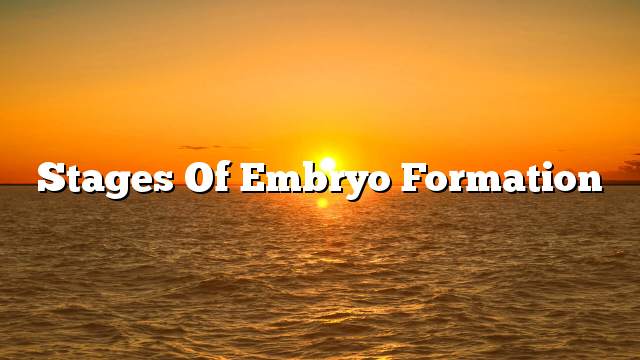Stages of fetal development
The embryo passes through the womb in several stages, starting with the fertilized egg, then the erythematous cyst, to the fetus stage, then the fetus after the third month,
Each phase is characterized by specific developments in the fetus, in terms of growth and completeness of the organs, or in terms of the length of the fetus and weight and shape, and placed in the womb, we will mention here in a summary of the most important of these stages.
First week
The egg is in this period in the uterine tube, having been fertilized at the top of the tube, and then moving slowly towards the uterus, and in the meantime exposed to several divisions until you reach the uterus, and settle in the back wall, and the age of the egg in this period from three to four days.
second week
The size of the egg has increased significantly, and the shape of the fetus is fairly clear, where the head can be distinguished from the limbs in it.
the third week
In which the fetus is in a very bent position, and the basic parts of the brain are clear, and form the vesicles and audio visual, which also shows the fetus four gill grooves, and become the bodies of Wolf phenomenon, with the disappearance of the membrane pharyngeal pharynx.
fourth week
In this period the embryo is significantly curved, the hemispheres of the brain appear hollow, the limbs look like flat oval bumps, and by the end of the first month the fetus is about seven millimeters long.
The fifth week
In which the size of the head of the fetus is relatively small, and the size of the head is relatively large, and the limbs are divided into parts. The nose appears in the form of a short flat bump, and the cornea is clear.
the sixth week
Bending is in constant decline, and gill cavities mostly disappear, and fingers and toes can be distinguished.
The seventh and eighth weeks
At this stage the head flexion is reduced, the neck is longer than before, the eyelids are folds above and below the eye, the upper lip is complete, the nose is more prominent than before, and by the end of the second month the fetus is about three centimeters long.
the third mounth
The length of the neck expands, the length of the neck increases, the limbs develop markedly, the nails begin to appear, and the organs begin to clear, leading to the possibility of often identifying the sex of the baby. The length of the fetus in this period is approximately nine centimeters.
Fourth month
The beginning of the appearance of hair, with a significant increase in the size of the fetus, where the length of this stage at about sixteen centimeters.
the fifth month
The fetus usually begins to move in this month, as the growth of head hair is noticeable, as well as the beginning of the deposition of the cotyledon. The fetus is about 26 centimeters long this month.
The sixth month
The body of the fetus is covered with fine hairs, the pigment coating may be deposited heavily, and the nail boundaries are clear in the dermis, and the length of the fetus in this period 31 cm.
the seventh month
Where the eyelids are open, with the atrophy of the membrane of the pupil. The testicle also descends with the vaginal sac to the peritoneum. The fetus is about 35 centimeters long this month and weighs one thousand and four hundred grams.
eighth month
The embryo appears pink, and is completely surrounded by the staining, and the fluff begins to disappear. The fetus appears plump, about 40 centimeters long, and weighs about three hundred grams.
The ninth month
The vulva largely disappears from the trunk, the navel is almost in the middle of the body, and the testicles are in the scrotum. It is about 50 centimeters long and weighs about 3300 grams.
